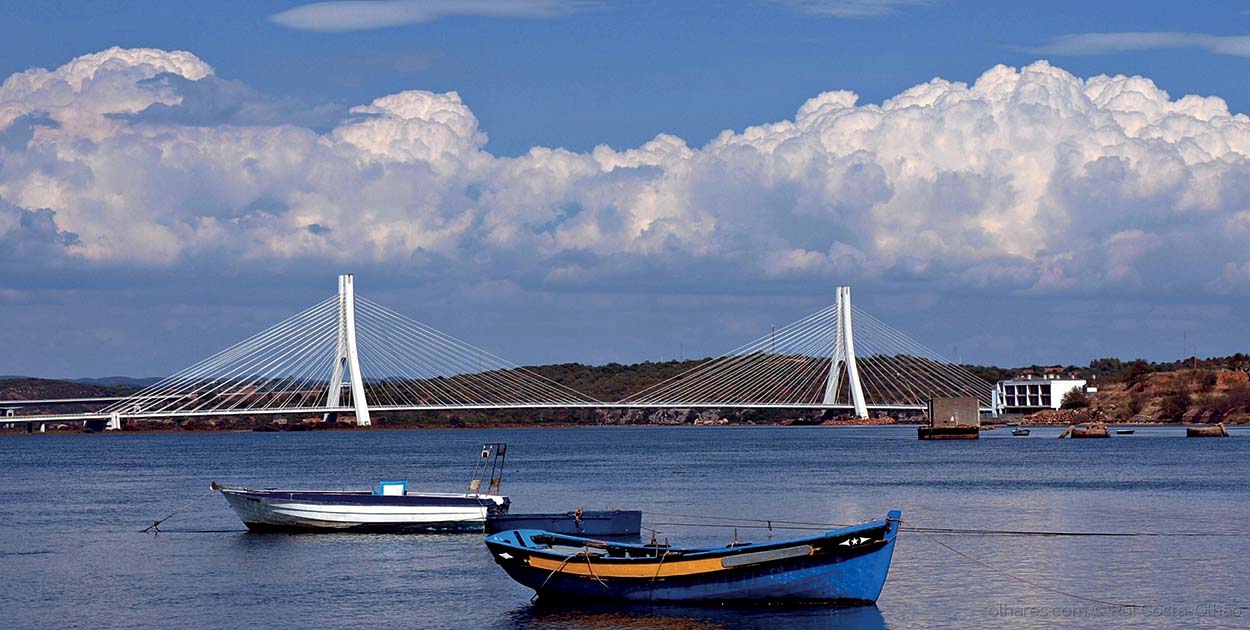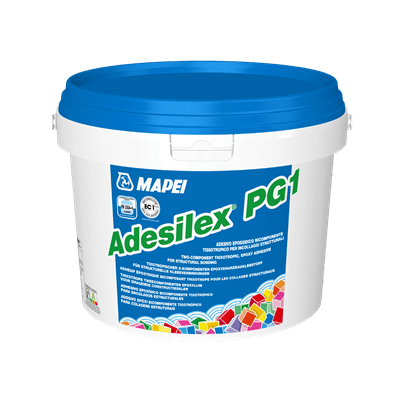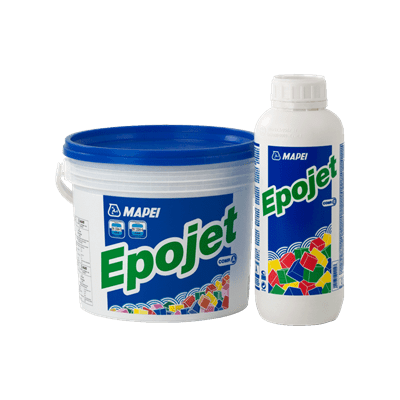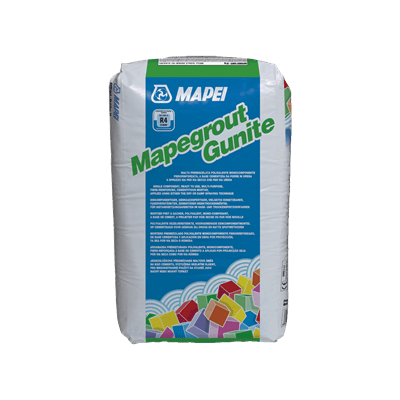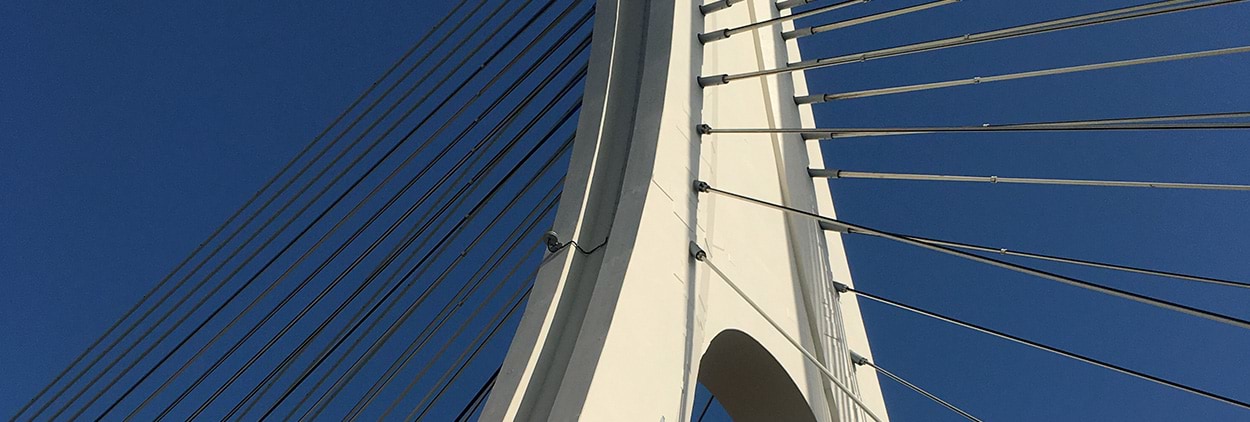
The bridge over the River Arade in Portugal
Renovation work on the concrete of a cable-stay bridge over the river Arade estuary.
The bridge over the River Arade estuary is located in the Portuguese city of Portimão in the region of Algarve. Inaugurated in 1991, it is a three-span cable-stay bridge made from prestressed reinforced concrete. After around 25 years of uninterrupted service, it was decided to carry out requalification work on the bridge. Following a series of controls on the bridge, the surface of the reinforced concrete showed signs of ageing due to the aggressive action of atmospheric agents and the water flowing in the river below the bridge. Also, after so many years service, the level of stress in the cable-stays needed to be checked and the condition of the supports for the road decks needed to be verified. In order to identify the most suitable materials and installation techniques for the requalification work, a thorough preliminary survey was carried out.
The bridge over the River Arade estuary is located in the Portuguese city of Portimão in the region of Algarve. Inaugurated in 1991, it is a three-span cable-stay bridge made from prestressed reinforced concrete. The central span is 256 metres long and each of the two lateral spans is 107 metres long. There are also two 107 metre reinforced cement towers in the shape of an upside-down “Y” between the three spans, to which the steel tie rods for the cables are attached. The viaducts for the road access at the eastern and western ends of the bridge have spans measuring 30 metres, 24 metres and 27 metres.
The bridge has a road deck for vehicles which is supported by beams and safety parapets made from iron. The upper deck, which forms the actual road for the traffic, is from 12 metres to 17 metres wide, and has two lanes running in each direction, with a hard shoulder running alongside each carriageway. The road surface is made from reinforced cement prestressed in a longitudinal direction with steel reinforcement running transversally across the road.
The foundations for the reinforced cement towers and the support pillars sit on 1.10 metre diameter piles which are from 50 metres up to a maximum of 63 metres long.
The total length of the River Arade Bridge, including the two access viaducts, is 842 metres.
One of the particular characteristics of the bridge, which makes it such an original structure, is the total lack of any form of rigid connection along the suspended road surface. This particular configuration impedes any movements in a horizontal direction.
The structure has a series of oscillation dampers which give the bridge – Portugal, and this area in particular, are prone to seismic activity – anti-seismic properties, so that it behaves like a pendulum and can oscillate in any direction.
PROPOSALS FOR THE INTERVENTION
After around 25 years of uninterrupted service, it was decided to carry out requalification work on the bridge. Following a series of controls on the bridge, the surface of the reinforced concrete showed signs of ageing due to the aggressive action of atmospheric agents and the water flowing in the river below the bridge. Also, after so many years service, the level of stress in the cable-stays needed to be checked and the condition of the supports for the road decks needed to be verified. In order to identify the most suitable materials and installation techniques for the requalification work, a thorough preliminary survey was carried out.
The contractor commissioned to carry out the requalification work contacted the Technical Services Department of Lusomapei (the Group’s Portuguese subsidiary), who provided support for the designers and contractor during the survey, and then for the entire duration of the work, recommending the most suitable materials to overcome the problems found on the structure.
The concrete of the support pillars was locally and partially deteriorated, and portions of the material had become detached, exposing the steel reinforcement. All the damaged and detached concrete was removed by hydro-blasting to expose the steel reinforcement, which was then treated with MAPEFER 1K one-component mortar. This product, made from cementitious binders, powdered polymers and corrosion inhibitors, has anti-corrosion and re-alkalisation properties that prevents rust forming on steel reinforcement. Also, when the mortar hardens, it is impermeable to water and aggressive gases present in the surrounding atmosphere.
The areas of the pillars where the damaged concrete had been removed were integrated with MAPEGROUT GUNITE one-component, ready-mixed, cementitious mortar for renovating concrete, which can be applied using either the dry or damp spraying technique.
Since the structure is exposed to strong winds the mortar could have dried too quickly, so MAPEQUICK AF 300 DRY alkali-free set-accelerator, which is suitable for shotcrete, was added directly to the mixing water.
The areas of the towers where the damaged concrete had been removed, and for other areas that were not suffering from the problems mentioned above, were repaired with MAPEGROUT THIXOTROPIC shrinkage-compensated fibre-reinforced mortar.
In the areas where the site surveys had highlighted cracks on the surface of the structure, the Technical Services Department of the Portuguese subsidiary recommended strengthening and consolidating the structure by injecting the cracked areas with EPOJET super-fluid epoxy resin and ADESILEX PG1 thixotropic adhesive.





